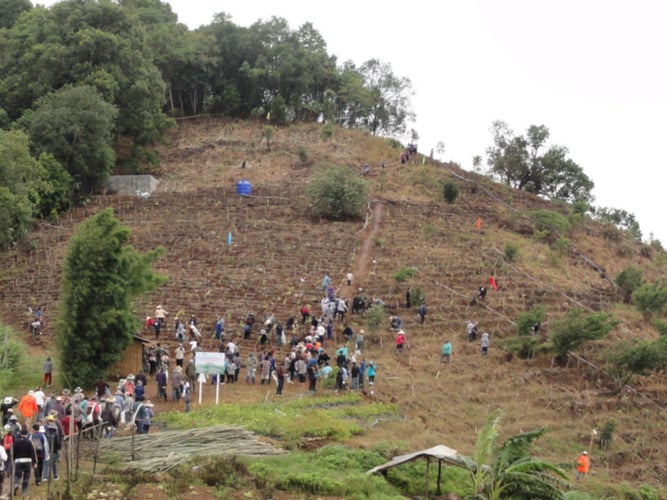Half of replanted tropical trees don’t survive more than five years, new study finds
Study analyses tree survival and growth data from 176 restoration sites in tropical and sub-tropical Asia

Your support helps us to tell the story
From reproductive rights to climate change to Big Tech, The Independent is on the ground when the story is developing. Whether it's investigating the financials of Elon Musk's pro-Trump PAC or producing our latest documentary, 'The A Word', which shines a light on the American women fighting for reproductive rights, we know how important it is to parse out the facts from the messaging.
At such a critical moment in US history, we need reporters on the ground. Your donation allows us to keep sending journalists to speak to both sides of the story.
The Independent is trusted by Americans across the entire political spectrum. And unlike many other quality news outlets, we choose not to lock Americans out of our reporting and analysis with paywalls. We believe quality journalism should be available to everyone, paid for by those who can afford it.
Your support makes all the difference.Around half of all trees planted in tropical and sub-tropical forest restoration projects do not survive more than five years, new research has found.
The study analysed tree survival and growth data from 176 restoration sites in tropical and sub-tropical Asia, and found that on average 18 per cent of planted saplings died within the first year,
This rose to 44 per cent after five years, but survival rates varied amongst sites and species with some projects seeing over 80 per cent of trees still alive after five years, but in others, a similar percentage died.
Forest restoration can be used to deal with biodiversity loss, climate change, and is also used widely for carbon offsetting.
An indication of success in these projects is often the number of trees planted, but the research shows that many of these trees are not surviving long-term.
About 15 per cent of the world’s tropical forests are found in Southeast Asia, however, in recent decades the region has also seen major deforestation, with forest cover reducing by an estimated 32 million hectares between 1990 and 2010. The region has therefore become an important focus for forest restoration projects.
Dr Lindsay Banin, co-lead author based at the UK Centre for Ecology & Hydrology, said: “The large variability in survival we found across sites could be for a number of reasons, including planting densities, the choice of species, the site conditions, extreme weather events or differences in management and maintenance.
“Local socio-economic factors may also be important. What’s clear is that success is very site-dependent – we need to understand what works and why and share that information, so we can bring all sites up to the level of the most successful and harness the full potential for restoration.
“There’s likely no one-size-fits-all approach and restoration action should be tailored to local conditions. This will help ensure the scarce resources and land available to restoration are used to best effect.”
The study also found that when an area had been fully deforested, reforestation efforts were less successful than in areas where some trees remained.
Saplings planted in areas with existing mature trees had roughly 20 per cent higher chance of survival. In more disturbed areas, more intensive measures for protection and maintenance may be needed.
Some evidence was also found that active restoration provides faster results than simply letting nature take its course.
Sites which included tree planting activities gained forest cover more quickly than sites which were left to regenerate naturally.
Prof David Burslem, co-author based at the University of Aberdeen in the UK, said: “The sites where active restoration is most needed – those that have already been cleared of trees – are also those where restoration is most risky and prone to higher numbers of trees dying.
“We need to understand better how to improve the survival chances of saplings on these sites, to ensure restoration has positive outcomes.
“But the study also provides a warning, to protect our remaining forests as much as possible, both because restoration outcomes are uncertain and to provide the diverse seed sources needed for restoration activities.”
The findings are published in the Philosophical Transactions of the Royal Society B: Biological Sciences.


Join our commenting forum
Join thought-provoking conversations, follow other Independent readers and see their replies
Comments